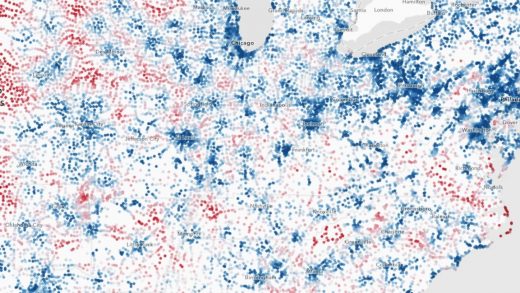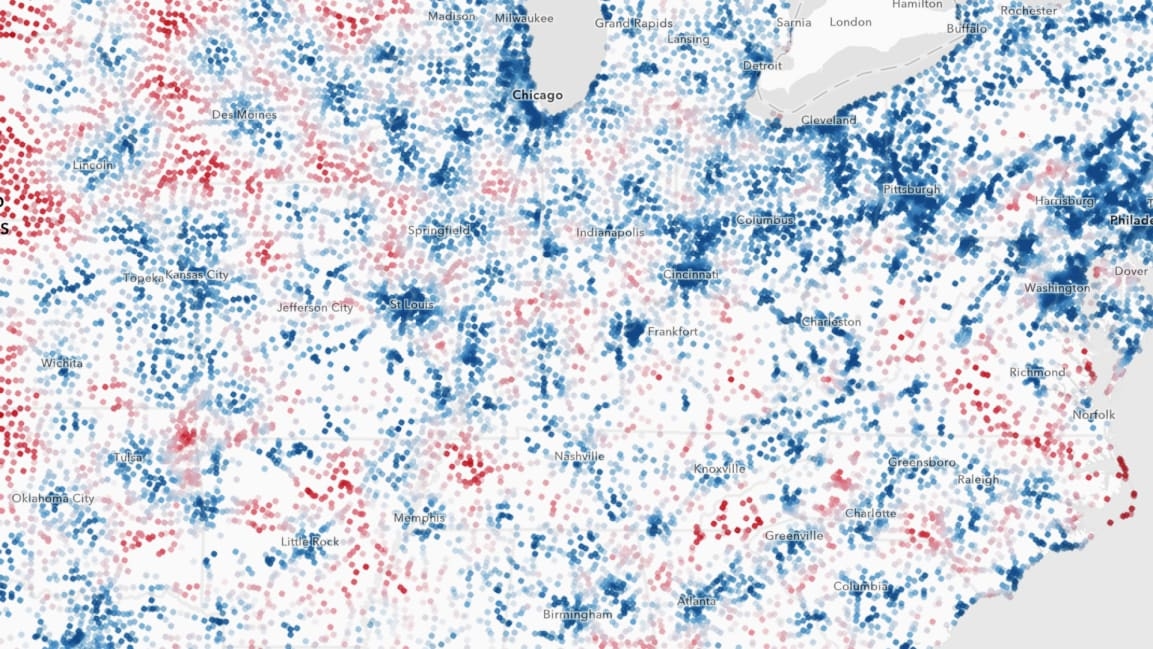This veteran population map shows VA healthcare access is wildly unequal throughout the U.S.
Unequal access to Veterans Affairs healthcare facilities has long been a topic of concern for veterans and their advocates, and debate over how to deal with the issue has increased in recent years as VA facilities have struggled to keep pace with an influx of service members whose tours of duty in Iraq or Afghanistan have left them in need of care.
At the heart of the issue is the time it takes for patients to travel from their homes to a VA facility. In January, the Trump administration proposed new rules that would allow veterans who live as close as 30 minutes from a facility to opt instead for private care—a controversial policy that some critics say will have a corrosive effect on the VA healthcare system as money is diverted into the private sector, the New York Times reports. The proposed plan is expected to take effect this summer.
Regardless of where you stand on the new plan, it’s clear that access to VA facilities is wildly uneven throughout the country, and that veterans in larger states, particularly in the Western half of the country, often carry a burden of longer-than-average transportation times.
Now, just in time for Memorial Day, spatial-analytics firm Esri is releasing a new interactive map that sheds light on which areas are more seriously affected. The map uses a color spectrum of dark blue, light gray, and red to visualize the amount of time it takes to drive from each census-designated place in the United States to the nearest VA medical facility.
In the map, veterans who live in the blue areas have drive times of 45 minutes or less, while those in the red areas have drive times of 45 minutes or more. When zoomed out, the map shows the largest swaths of long drive times spread throughout the Deep South, Great Plains, Rocky Mountain states, and the Pacific Northwest.
If you zoom into the map and click on any of the points, you can see additional details about the designated area, including trip time, trip distance, the name of the closest VA facility, the veteran population of the area, and the veteran share of the total population.
At the state level, according to Esri’s analysis, the District of Columbia has the shortest average drive time at just four minutes, while Alaska has the highest at 603 minutes—however, both of those areas are outliers given their size. Connecticut has the second shortest drive time at an average of 20 minutes, while Nevada had the second longest at an average of 74 minutes.
You can find the map here or via the embed below.
(17)



